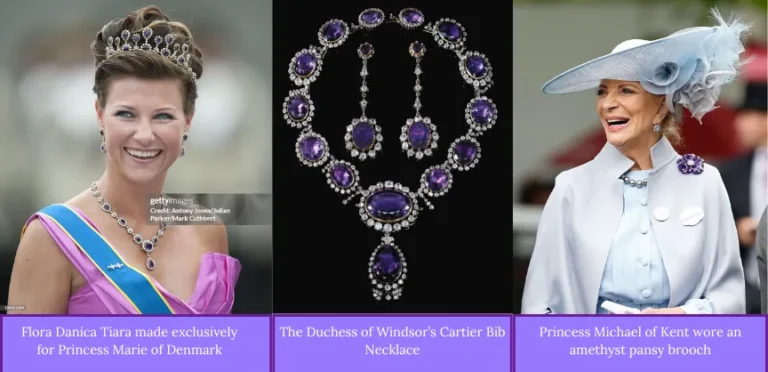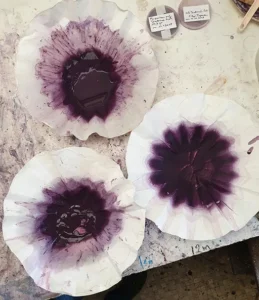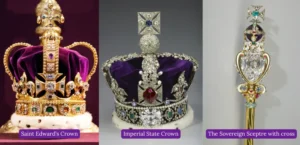
Estimated reading time :
April 18, 2025 9:49 am
Why is Amethyst known as the royal stone?
Writer’s Name :
Date of Publishing :
Writer’s Name :
Arya
Estimated reading time :
Introduction
Think of the riches and royalty but skip Amethyst on the list, sorry, can’t sit on the same table.
This stunning purple stone, long been praised for its beauty and significance, has always been associated with nobility, spirituality, and love.
Throughout the article, I am going to share why amethysts are considered as the royal stone, all while we uncover the journey of ancient traditions, cultural beliefs, and the allure of its vibrant hue.
The Significance of Purple in Royalty
The color purple has always held a special place, not just in the hearts of kings and queens but also in the blood of writers. I’ll agree to that personally!
From being adorned in the jewel-jaded crowns of the elites to being dressed in the absolute class of luxury to sitting just perfectly on the cover titles of books-of-significance such as “The color purple” by Alice Walker, or “When I Am an Old Woman I Shall Wear Purple” by Sandra Martz, I guess it’s only valid for us to call Purple as the cult’s favorite.

But then WHO started this train of purple as the symbol of power? Don’t you wonder, why is it that someone woke up and chose violence in the name of luxury? Or let’s answer that common question – Why Royals loved Amethyst.
Guess we are blaming ancient Phoenicia for that. During that era, the creation of the Tyrian purple, an imperial dye, revolutionized the concept of royal colors. This precious dye was extracted from Murex sea snails and it required approximately 10,000 mollusks to produce a single gram of purple dye. The process was labor-intensive, which made the color extremely rare and valuable, establishing purple as the ultimate symbol of wealth and power to the point it was exclusive to royalty and high-ranking officials. I mean, isn’t that obvious? It’s basic math! 🙄

Image Courtesy : Colorlex.com

In case you are curious to read just more about the color Tyrian Purple, you can check out this article.
Throughout history, laws were enacted to prevent commoners from wearing this regal color, reinforcing its association with nobility.
The royalty of Tyrian purple from 16th century BCE reminds me of Indigo, also known as the ‘blue gold’ which happened in the 18th century CE. Nearly 3500 years, yet some things never change.
On that note, to be around for 3500 years, imagine how rich of a culture, a color itself carries.
Amethyst's Royal Heritage
The historical significance of amethyst as a royal stone is believed to have begun in ancient Egypt, where it was reserved for Pharaohs and their families. Archaeological findings have revealed hieroglyphics at ancient amethyst mines, underscoring its importance within royal society.
Fast forward to medieval Europe, the purple crystal was enjoying its cardinal era, considered as valuable as diamonds and rubies, until the finding of that ONE mine – Minas Gerias, in Brazil with large deposits of amethysts bringing it down in terms of price due to an increase in its availability.

Notable Royal Collections
It’s new to none that Amethyst and Royalty go hand-in-hand. The British Royal Family has long embraced the stone in their collections. The Kent Amethyst suite features exquisite pieces adorned with deep purple stones surrounded by diamonds. Additionally, a large cabochon amethyst stone sits prominently above the Cullinan I diamond in the Imperial Scepter of the British Crown Jewels. In Russia, this royal purple beauty adorned the crown jewels, including a stunning necklace worn by Empress Alexandra. The search for precious stones initiated by Peter the Great led to the discovery of highly prized Siberian amethysts, further enhancing its royal reputation.

Sweden also boasts a rich collection of this royal stone jewelry, including pieces originally gifted by Empress Josephine to Augusta of Bavaria. Queen Silvia’s tiara features 15 large amethysts that symbolize both beauty and heritage.
Cleopatra’s Influence
Cleopatra’s famous amethyst stone ring, worn during her relationships with Julius Caesar and Mark Antony, sparked a fashion trend among Roman noblewomen.
“A QUATRAIN IN THE Greek Anthology describes a signet ring of amethyst that belonged to a Queen Cleopatra and was engraved with an image of the goddess Methe, or Drunkenness.
Amethyst was believed to be an antidote against inebriation. In the belief system of the Persian Magi from which this superstition descends, stones were often engraved with a particular talisman thought to increase their beneficial power. But here there is a conflict between gemstone and figure, resolved in favor of sobriety when the ring is placed upon the hand of the queen. The epigram thus functions as a compliment to a royal patron.”
Source : Cleopatra’s ring by Gutzwiller, Kathryn J. Greek, Roman and Byzantine Studies; Cambridge Vol. 36, Iss. 4, (Winter 1995): 383-398.
Spiritual Significance
Beyond its royal connections, this gem is highly regarded for its spiritual properties. Ancient Greeks believed that wearing amethyst crystal could prevent intoxication and promote clarity of mind. This belief gave rise to drinking vessels crafted from the crystal, reinforcing its association with wisdom and sobriety.
In modern times, this stone is often linked to spiritual growth and emotional balance. It resonates with individuals seeking inner peace and clarity, making it a popular choice for meditation practices. Its calming energy is believed to help alleviate stress and anxiety, enhancing one’s connection to higher consciousness.
Read more here about the mythological history of Amethyst. And while you are here, you may also want to learn about Why is Amethyst considered as the February Birthstone.
Conclusion: A Royal Stone for All
Amethyst’s rich history as a royal stone is firmly rooted in its captivating color and cultural significance. From its association with nobility in ancient civilizations to its continued presence in modern royal collections, this purple stone embodies power, beauty, and spirituality.
Whether you are drawn to its alluring hue or its metaphysical properties, wearing, gifting, or even just using it for aesthetic show purposes, amethyst has got you covered in every zone all while connecting you to centuries old traditions and elegance.
As February’s birthstone, it serves as a reminder that we all possess an inner nobility waiting to be expressed.
If you made it till here, Thank you, for spending time on this article & I hope I made it worth your energy. In return, I need a little favor. Please let me know how you liked the article & if there’s anything you want me & my team to specifically cover on our page.
We are working really hard to make this website the one-stop solution for you when it comes to gemstones, from learning to buying the A-grade quality & we can not do this without you. Your involvement is heartly appreciated 🙂
You may also like


